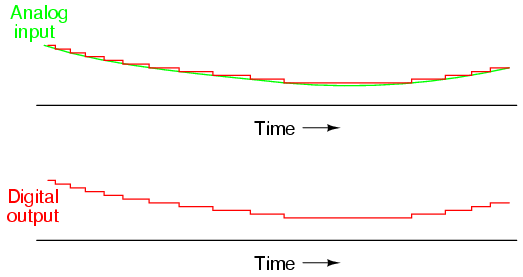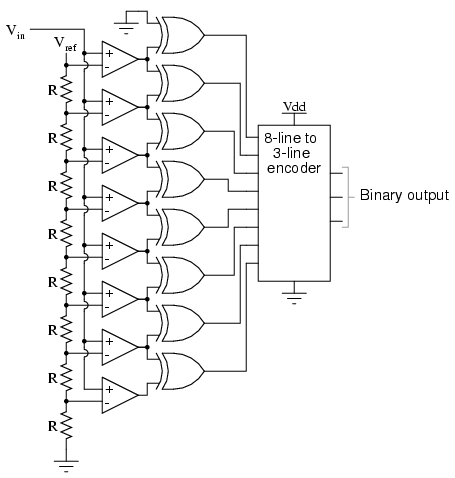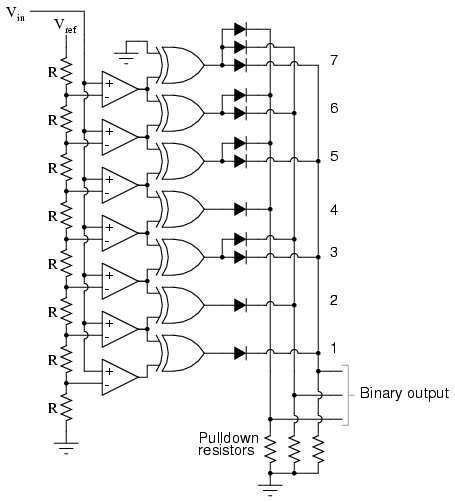Also called the parallel A/D converter,
this circuit is the simplest to understand. It is formed of a series of
comparators, each one comparing the input signal to a unique reference
voltage. The comparator outputs connect to the inputs of a priority encoder
circuit, which then produces a binary output. The following illustration
shows a 3-bit flash ADC circuit:

Vref is a stable reference voltage provided by a precision
voltage regulator as part of the converter circuit, not shown in the
schematic. As the analog input voltage exceeds the reference voltage at each
comparator, the comparator outputs will sequentially saturate to a high
state. The priority encoder generates a binary number based on the
highest-order active input, ignoring all other active inputs.
When operated, the flash ADC produces an output that looks something like
this:

For this particular application, a regular priority encoder with all its
inherent complexity isn't necessary. Due to the nature of the sequential
comparator output states (each comparator saturating "high" in sequence from
lowest to highest), the same "highest-order-input selection" effect may be
realized through a set of Exclusive-OR gates, allowing the use of a simpler,
non-priority encoder:

And, of course, the encoder circuit itself can be made from a matrix of
diodes, demonstrating just how simply this converter design may be
constructed:

Not only is the flash converter the simplest in terms of operational
theory, but it is the most efficient of the ADC technologies in terms of
speed, being limited only in comparator and gate propagation delays.
Unfortunately, it is the most component-intensive for any given number of
output bits. This three-bit flash ADC requires eight comparators. A four-bit
version would require 16 comparators. With each additional output bit, the
number of required comparators doubles. Considering that eight bits is
generally considered the minimum necessary for any practical ADC (256
comparators needed!), the flash methodology quickly shows its weakness.
An additional advantage of the flash converter, often overlooked, is the
ability for it to produce a non-linear output. With equal-value resistors in
the reference voltage divider network, each successive binary count
represents the same amount of analog signal increase, providing a
proportional response. For special applications, however, the resistor
values in the divider network may be made non-equal. This gives the ADC a
custom, nonlinear response to the analog input signal. No other ADC design
is able to grant this signal-conditioning behavior with just a few component
value changes. |